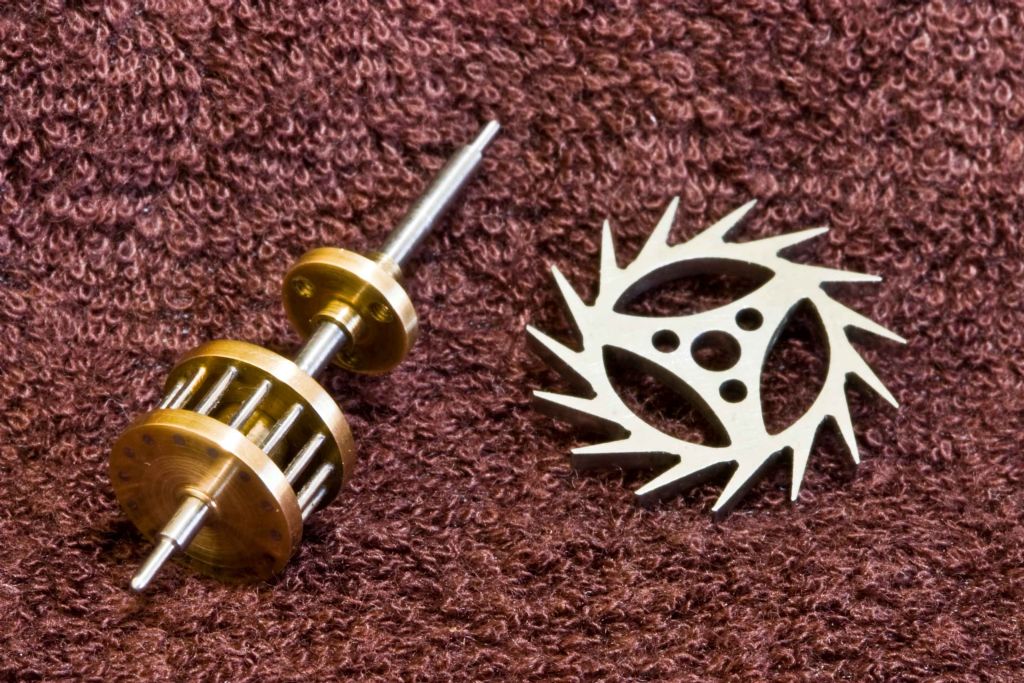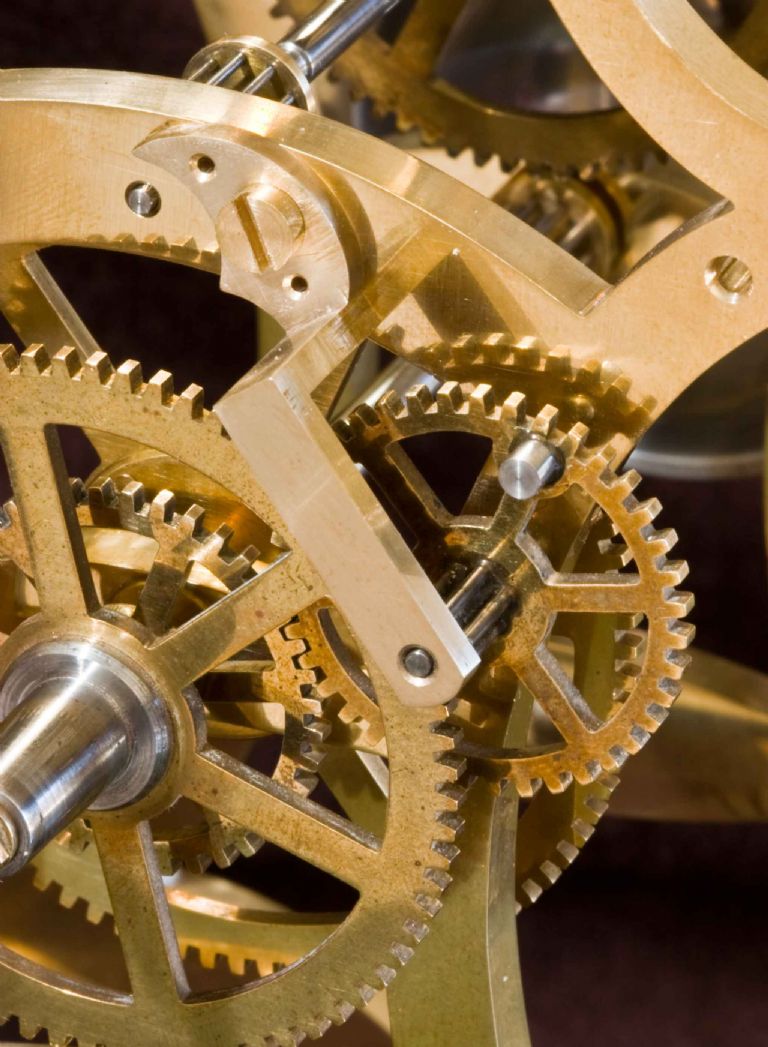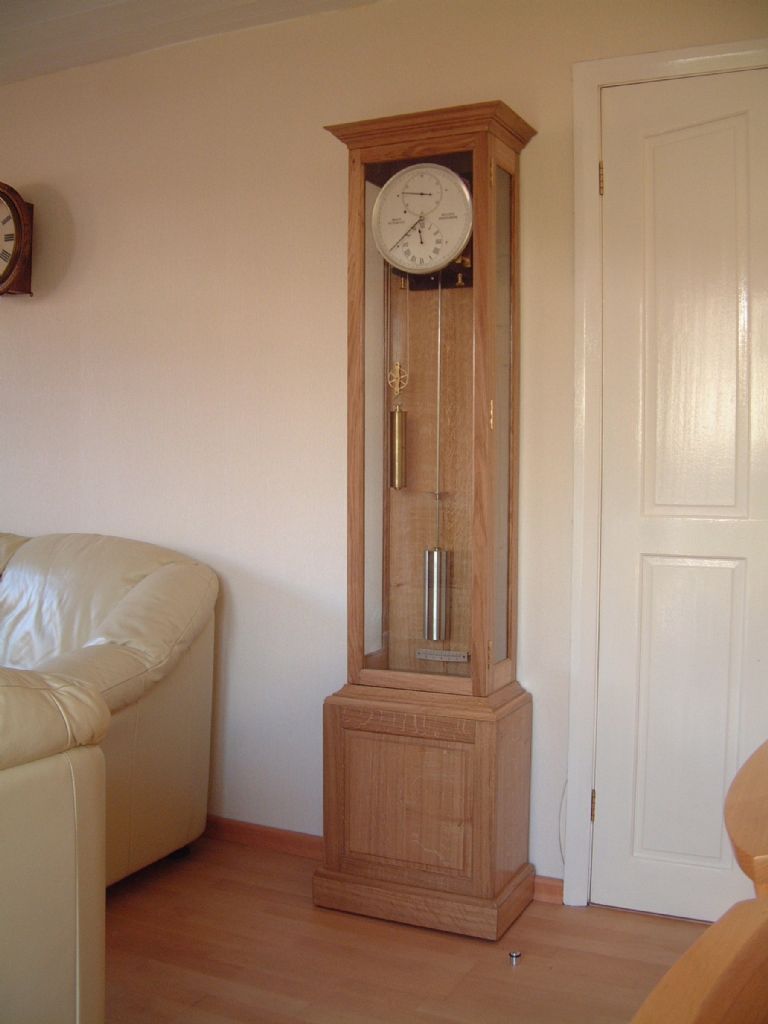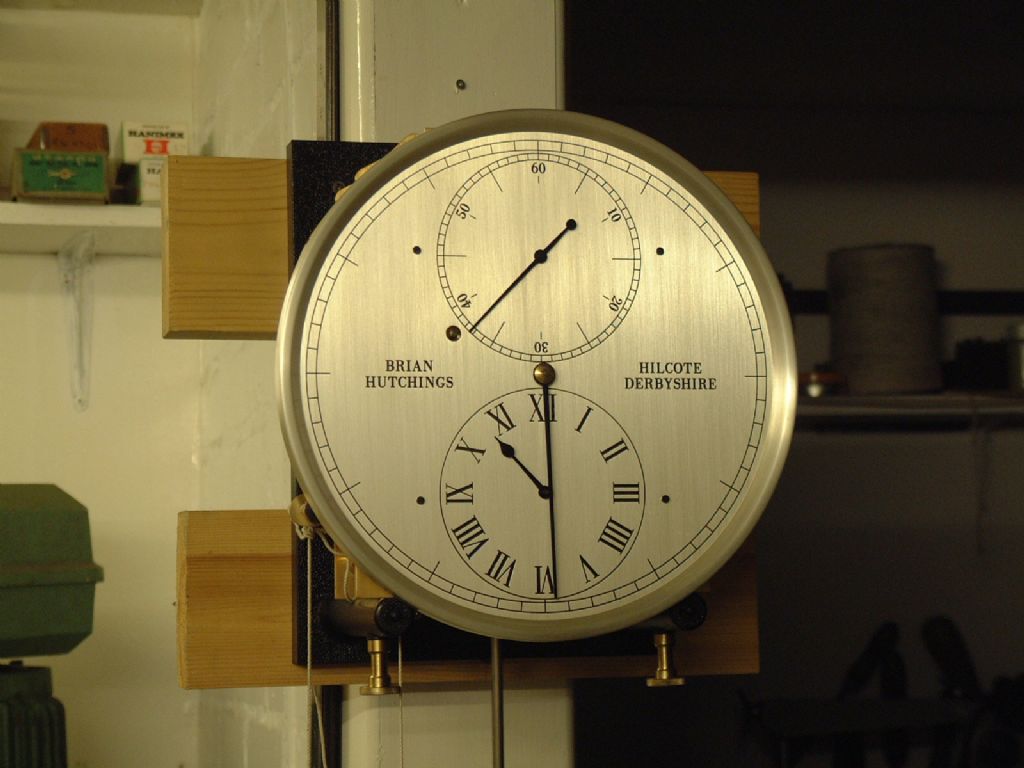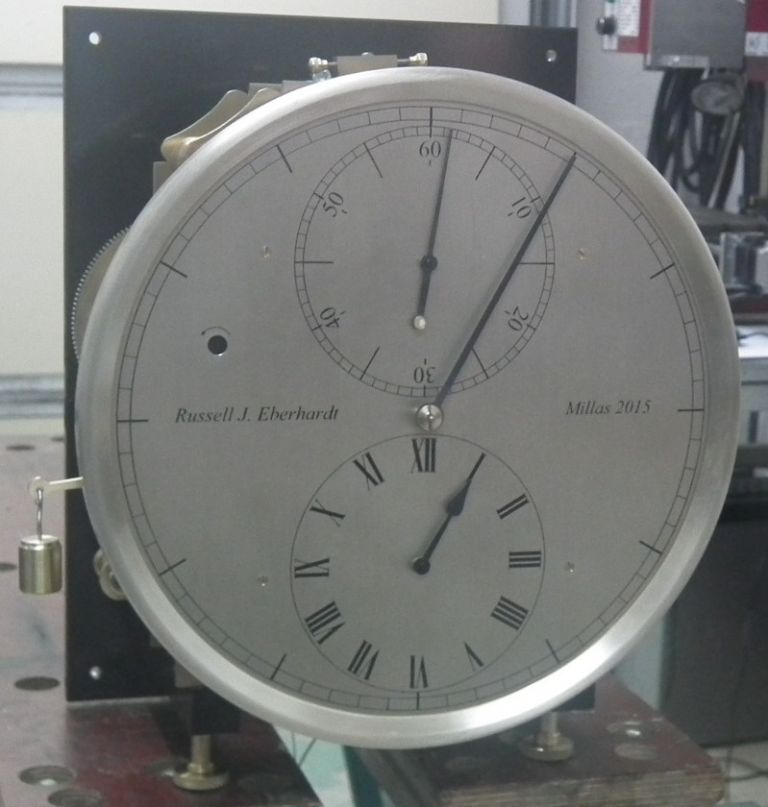Thanks for your compliments John (Ajohnw) I’ll send you a PM later.
I’m not particularly proud of the results of my gear cutting, nor in fact the photograph which shows a mixture of old and new (clock parts).
As for gear-cutting, the teeth of the cannon and hour wheels in particular look like something from several centuries ago. At the scale I was working, the amount of curvature (involute/cycloid/radius) is hardly noticeable, and my simple radius should, and probably has been sufficient.
I think my next comments should be under a new/different thread, but I’ll leave them here for now. I anticipate some clever replies which I trust this old brain of mine will grasp.
Although I am supposed to know about gears and have a good head for geometry, I cannot get my head around the claim that cycloidal tooth profiles are purely rolling not sliding. If that is the case then why do gears wear out?
For any pair of teeth in motion (and while ignoring surface deformation), there are always two lines of contact travelling towards or away from each other. The momentary exception being as their relative direction becomes tangential /identical.
Although the geometry suggests rolling, surely there has to be some sliding?
What do the tests for gear-train friction tell us? Personally, I don’t have a clue.
Michael, I can’t bring myself to study your link, but it sure looks brilliant – **LINK**
Regards,
Sam (aka Dennis)
Sam Stones.


